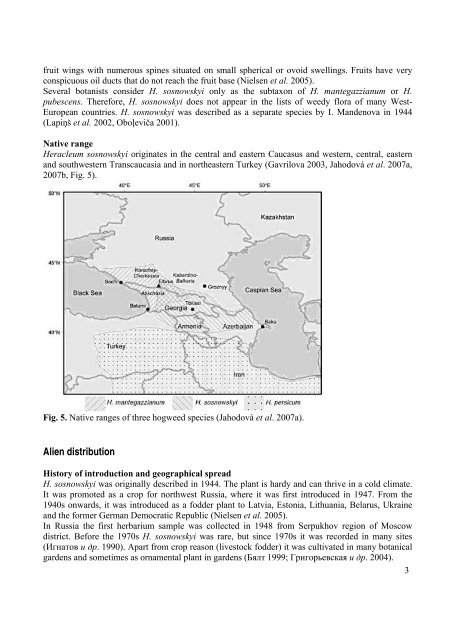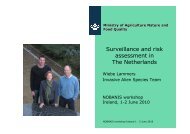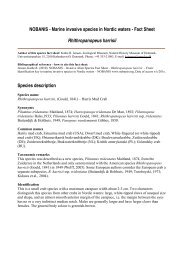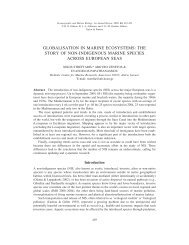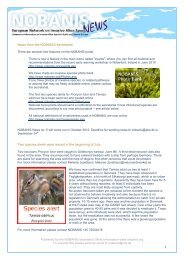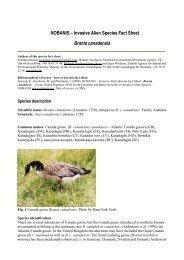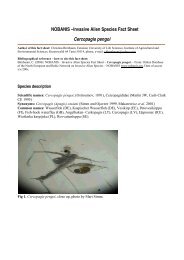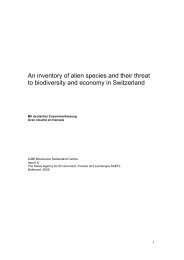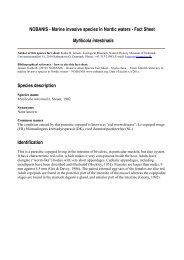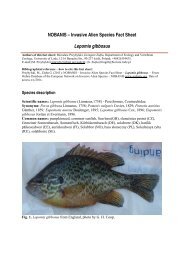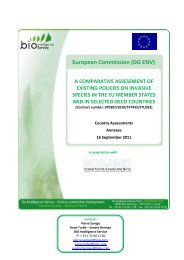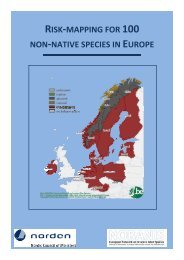NOBANIS – Invasive Alien Species Fact Sheet Heracleum sosnowskyi
NOBANIS – Invasive Alien Species Fact Sheet Heracleum sosnowskyi
NOBANIS – Invasive Alien Species Fact Sheet Heracleum sosnowskyi
Create successful ePaper yourself
Turn your PDF publications into a flip-book with our unique Google optimized e-Paper software.
fruit wings with numerous spines situated on small spherical or ovoid swellings. Fruits have very<br />
conspicuous oil ducts that do not reach the fruit base (Nielsen et al. 2005).<br />
Several botanists consider H. <strong>sosnowskyi</strong> only as the subtaxon of H. mantegazzianum or H.<br />
pubescens. Therefore, H. <strong>sosnowskyi</strong> does not appear in the lists of weedy flora of many West-<br />
European countries. H. <strong>sosnowskyi</strong> was described as a separate species by I. Mandenova in 1944<br />
(Lapiņš et al. 2002, Oboļeviča 2001).<br />
Native range<br />
<strong>Heracleum</strong> <strong>sosnowskyi</strong> originates in the central and eastern Caucasus and western, central, eastern<br />
and southwestern Transcaucasia and in northeastern Turkey (Gavrilova 2003, Jahodová et al. 2007a,<br />
2007b, Fig. 5).<br />
Fig. 5. Native ranges of three hogweed species (Jahodová et al. 2007a).<br />
<strong>Alien</strong> distribution<br />
History of introduction and geographical spread<br />
H. <strong>sosnowskyi</strong> was originally described in 1944. The plant is hardy and can thrive in a cold climate.<br />
It was promoted as a crop for northwest Russia, where it was first introduced in 1947. From the<br />
1940s onwards, it was introduced as a fodder plant to Latvia, Estonia, Lithuania, Belarus, Ukraine<br />
and the former German Democratic Republic (Nielsen et al. 2005).<br />
In Russia the first herbarium sample was collected in 1948 from Serpukhov region of Moscow<br />
district. Before the 1970s H. <strong>sosnowskyi</strong> was rare, but since 1970s it was recorded in many sites<br />
(Игнатов и др. 1990). Apart from crop reason (livestock fodder) it was cultivated in many botanical<br />
gardens and sometimes as ornamental plant in gardens (Бялт 1999; Григорьевская и др. 2004).<br />
3


